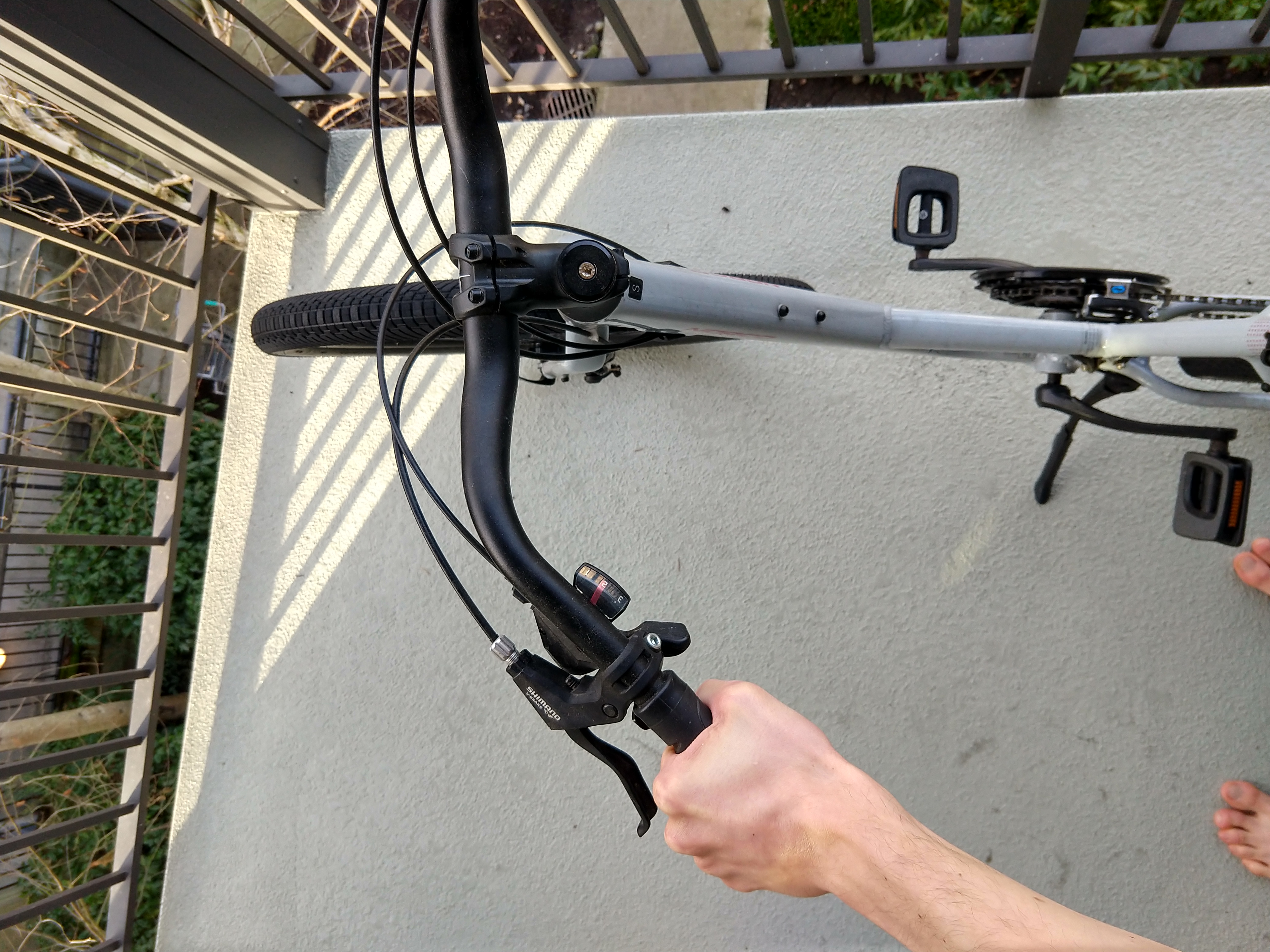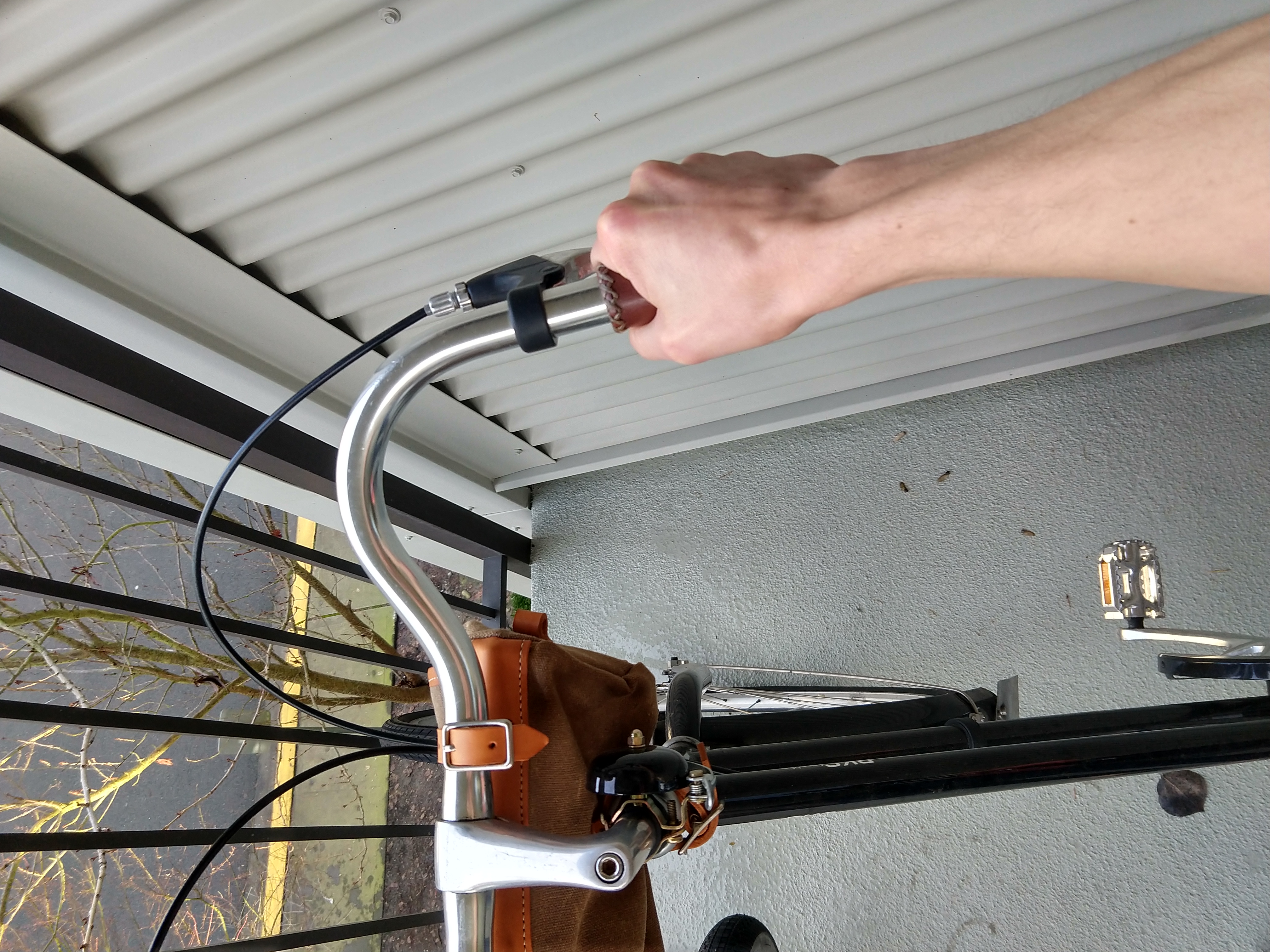Last updated: January 2nd, 2023
With every new model year, a barrage of technology and marketing jargon promises a smoother, easier ride.
But in reality, the easiest bike to ride isn’t so elusive or high-tech.
In fact, you might already be familiar with the styles that practically guarantee an easy and altogether enjoyable ride.
This article might contain affiliate links. As a member of programs including Amazon Associates, I earn from qualifying purchases.
This is the easiest bike for most people to ride
Hybrid bikes and upright city bikes are the easiest types to ride on mild terrain. They’re comfortable, forgiving, and easy to size properly. They also tend to feel stable with light cargo like commuting gear or groceries.
Furthermore, city bikes and hybrid bikes are the easiest kind to accessorize for practical uses. They usually have all the rack and fender one could need, so they’re a breeze to gear up for everyday needs.
These two styles are often mistaken for each other, so I’ve put together a detailed comparison of city vs. hybrid bikes for your reference.

Aren’t mountain bikes easy to ride? Mountain bikes are extremely forgiving and stable. They’re the easiest bike to ride on rough terrain thanks to large, knobby tires, extremely powerful brakes, and (generally) suspension.
However, most MTBs are too sluggish to use when the terrain doesn’t call for them. If you stick to asphalt or even smooth gravel, then mountain bikes are simply overkill compared to hybrids. Not hard to ride, but not efficient, either.
How hard is it to ride a road bike? Road bikes aren’t technically harder to ride, but they take much longer for new cyclists to get comfortable on. The riding position and narrow tires are main factors, along with some other that this article explains at length.
They’re a different experience from the straight or swept-back bars and wider tires most of us grow up with. And that’s fair enough, since they’re intended for different purposes—mainly speed.
Even as an experienced cyclist, it took multiple rides before I felt at home on a road bike.
What about riding a cruiser? It’s true that beach cruisers are easy to ride at low speeds on a smooth path, but they struggle in other scenarios. They’re fun and comfortable, but also inefficient and clumsy.
Here’s a closer look at what to expect when riding a beach cruiser.
Here’s how to find an easy-to-ride bike
It’s surprisingly simple to find a bike that’s easy to use for all-around riding.
Mind you, we’re talking some mix of urban commutes, riverfront cruising, dirt paths, random errands, and the like. More athletic or aggressive riding is another story.
Anyway, take a test ride if at all possible. If a picture is worth a thousand words, then spending time on the bike is worth a million. It’s all the better if you can test multiple bikes in a row, while the last one is fresh in your memory.
But if that’s not realistic, or if you just want to narrow your search, then read on.
Moderately upright posture
An upright riding position is comfortable, relaxing, and intuitive.
Sitting heads-up with a familiar weight distribution makes it easy to ride in everyday conditions.
Upright bicycles feel more like an extension of ourselves, and less like an awkward contraption to adjust to.
The trade-off is that totally vertical posture is slow. It catches a lot of wind, and makes it harder to use all your leg muscles while pedaling.
That’s no problem for a few, flat miles. You’ll find a Dutch bike (or something similar) supremely comfortable, and you won’t be on it long enough to miss the speed.
If you tackle hills or longer, windier rides, then a slight forward lean is a better compromise.
You’ll catch less wind and pedal more efficiently. You’ll also lose the downright regal comfort of a traditional city bike, but it’s still far roomier than the cramped cockpit of most road bikes.
Slightly swept-back handlebars
Of all the factors in making a bike easy and pleasant to ride, handlebars are the most overlooked.
To get a natural and comfortable wrist angle, the grip area should angle back at least 30°-45° as in the first picture.
The second picture shows a traditional style with far more sweep, which is also a great choice.


This reduces joint stress by approximating the natural angle of your wrists (when your arms hang by your sides).
This alone doesn’t determine whether the bike is easy to ride, but it does help you feel at ease.
Totally straight handlebars contort your wrists into an unnatural angle. That’s a necessary trade-off for control during very aggressive riding. For everything else, it’s just an unnatural position to force your hands into.
Wide tires
Wider tires are smoother, more comfortable, and have more traction. That equates to an easy and relaxing ride on a wider range of terrain.
And within reason, they’re not slower than skinny tires.
The extra air volume soaks up more small bumps and vibrations. The terrain is less jarring, which preserves momentum.
Sure, width adds weight, but the smoothness more than offsets it.
Just what is a “wide” tire? It’s relative to the style of bicycle, but anything above 35 mm (usually labeled “35c”) is good for decent streets. Look for 45-55 mm for rough streets or unpaved riding.
It’s equally important to use the right tire pressure. Any tire will feel jarring if it’s too firm!
I’ve covered tire pressure here in more detail. The improvement in ride quality is well worth the effort to dial in the right pressure.
High-quality brakes (of any type)
You’ll be more confident and at ease when you can easily stop with just one or two fingers on each brake lever.
Nothing is more nerve-wracking for a new cyclist than weak, mushy brakes. And regardless of experience, it’s unsettling when a quick stop requires all the grip strength you can muster.
The solution may be surprising. Disc brakes are more powerful in general, but cheap disc brakes are often weaker than properly-adjusted rim brakes.
Entry-level bikes (e.g., the $500-$600 range) are hit and miss with brake quality. I’ve ridden both excellent and terrible ones at that price point.
Rim brakes are likelier to perform well in this price range. They work well for all practical purposes (when properly adjusted), so they’re the safest bet if you can’t test-ride before buying.
Don’t worry (much) about weight
It’s a common misconception that heavy bikes are much harder to ride.
Unless you’re racing—or flinging your bike around in some sort of mid-air tricks—it makes almost no practical difference.
Granted, accelerating from a dead stop is harder work on a significantly heavier bike—especially if a lot of the weight is in the wheels or tires. But offsetting that effort is as simple as down-shifting one gear.
Once you’re up to speed, the difference more or less vanishes.
Spend your hard-earned money on practical and durable parts, not weight-shaving details that don’t make riding noticeably easier.
If you’re skeptical, or just curious, then check out this deep-dive into bicycle weight to learn more.
The selection of bikes has never been more varied or niche-specific.
Even so, the qualities of an easy-to-ride bike have not changed a bit: partly or fully upright posture, relaxed handlebars, wide tires, and trustworthy brakes.
Any bike that meets those simple criteria is likely to feel intuitive, comfortable, and relaxing in the saddle.
Fortunately, these are basic design and geometry factors, not technological ones. As little as $400-$800 is enough for a bicycle you’ll feel at home on.
As for specific suggestions, head on over to my city/urban and entry-level hybrid guides as a starting point.
